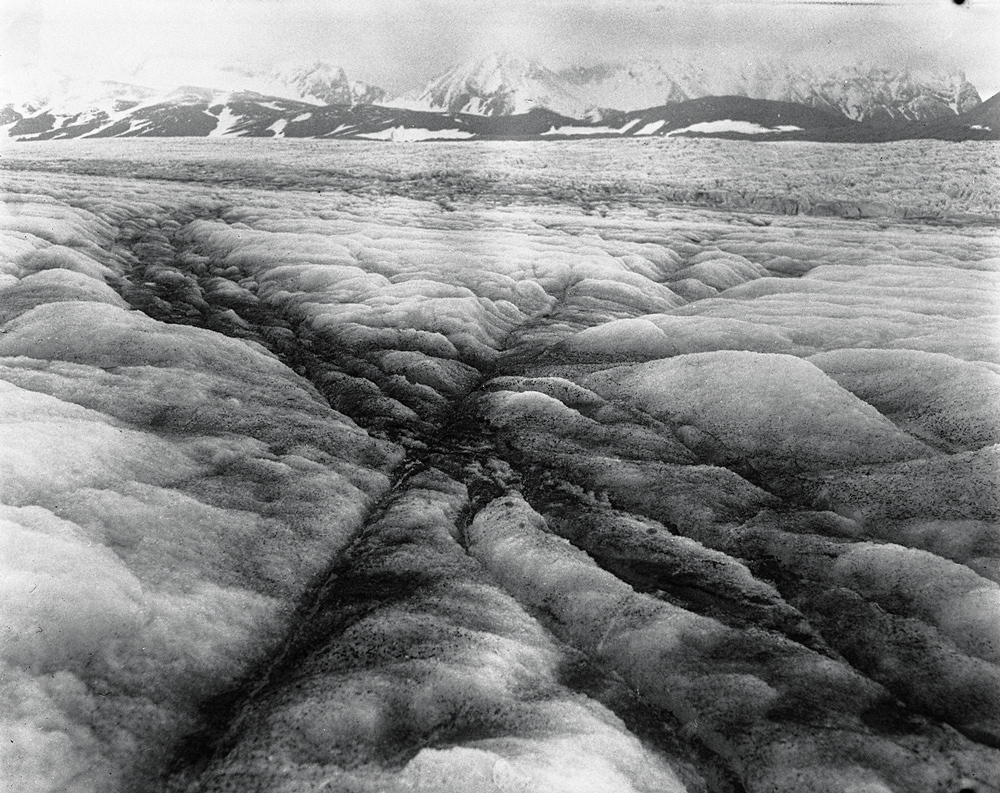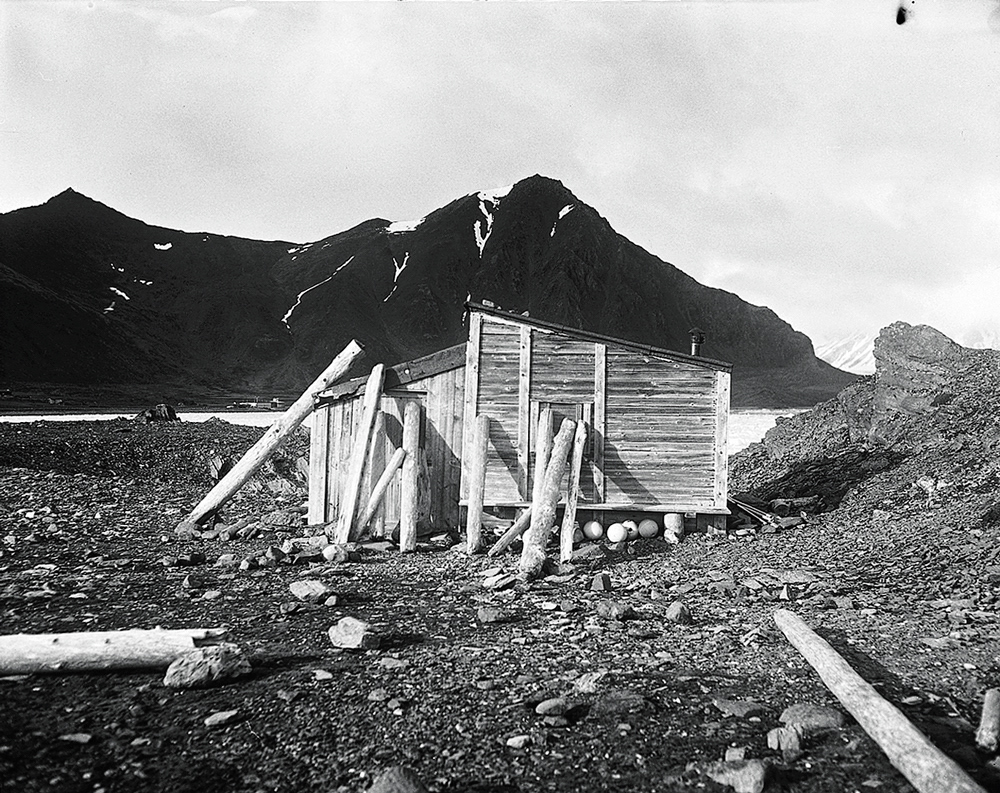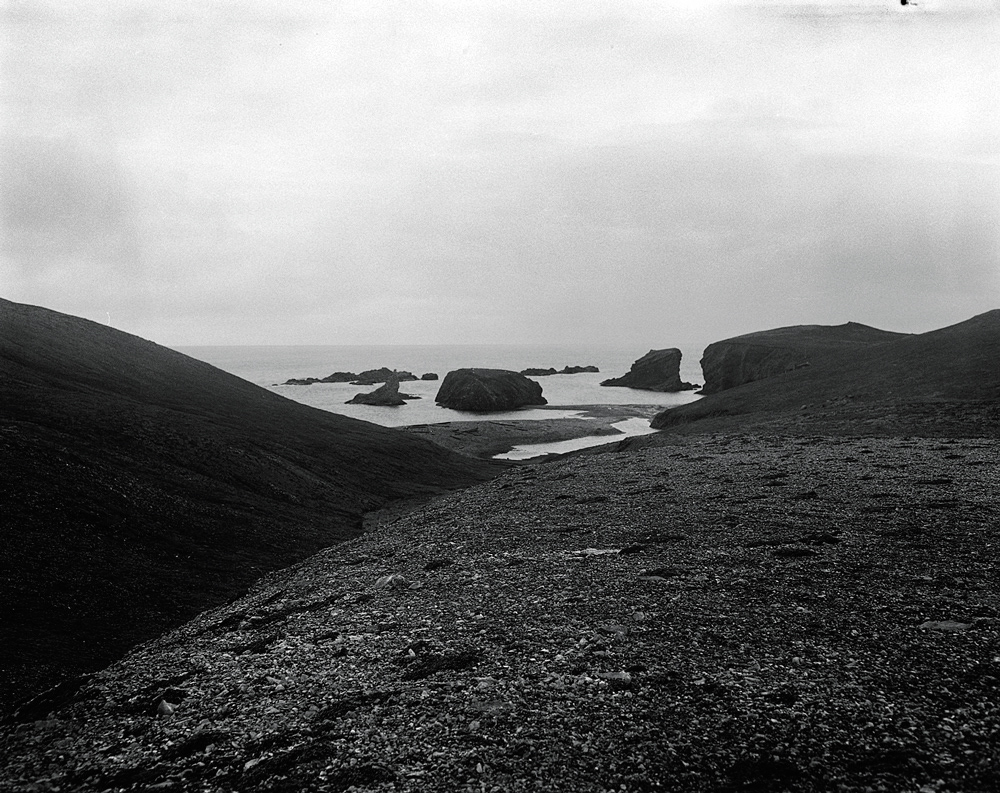





















The Salix Polaris cycle came to being as the effect of a journey I made with Polish scientists to the Polish Polar Station, Hornsund on Spitsbergen (August/September 2012). The photographs taken there resulted from meeting people, whose lives are inseparably connected with science and nature. The title polar willow (Salix Polaris) is a small shrub only a few centimetres high. Its form resembles human nervous or circulatory system. It is strong, wind and frost resistant, and its fresh sprouts develop also under snow. The willow is defined by dendrologists, who can tell its age by the number of growth rings and read its past, as they use a microscope to examine the scares in the rings. To me, the polar willow has become a symbol of explorer's determination. The project attempts also to analyse the mutual relations between art and science.
A fragment of my journey log: The Polish Polar Station belongs to the Institute of Geophysics, Polish Academy of Sciences. Situated in the southern part of Spitsbergen, it attracts scientists from all over the world. They conduct research in glaciology, meteorology, seismology and geomagnetism. I believe, however, science is just an excuse that allows them to return here time and again. Return to a place so strongly determined by nature,
a place hostile to a man, where even death is of a different dimension. What is it that attracts them? A quest for mystery? Need for alienation? Divine void, holy purity, distinction from the rest of the planet? Or is it simply fascination with the world.
a place hostile to a man, where even death is of a different dimension. What is it that attracts them? A quest for mystery? Need for alienation? Divine void, holy purity, distinction from the rest of the planet? Or is it simply fascination with the world.
Cykl Salix Polaris jest efektem podróży z polskimi naukowcami do Polskiej Stacji Polarnej Hornsund na Spitsbergenie (sierpień/wrzesień 2012). Zdjęcia powstały w wyniku spotkania z ludźmi, których życie jest nierozerwalnie związane z nauką i przyrodą. Tytułowa wierzba polarna (Salix Polaris) jest niewielką krzewinką, wyrastającą zaledwie kilka centymetrów nad ziemią. Formą przypomina ludzki układ nerwowy albo krwionośny. Jest silna, dobrze znosi wiatry i mrozy a jej świeże pędy rozwijają się także pod śniegiem. Wierzba jest obiektem badań dendrochronologów, którzy określają jej wiek na podstawie ilości słojów, potrafią także odczytać jej przeszłość, widząc pod mikroskopem w usłojeniu zabliźnione rany. Dla mnie wierzba polarna stała się symbolem determinacji odkrywcy. Projekt próbuje także przeanalizować wzajemne relacje między sztuką a nauką.